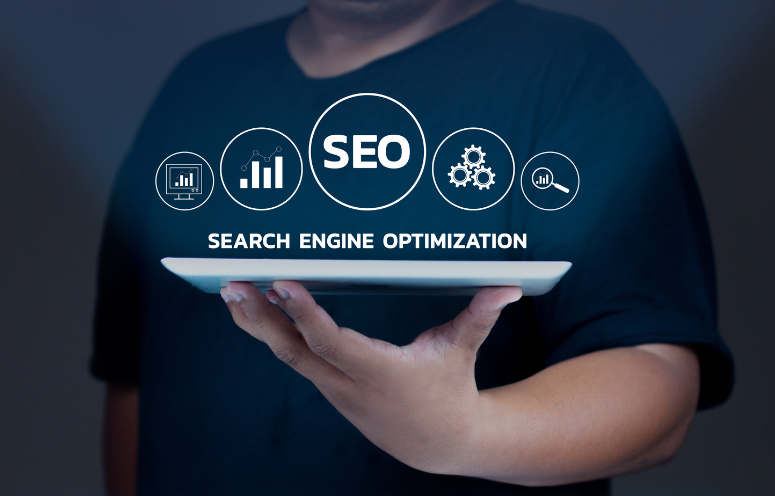-
Table of Contents
Unlock the power of on-page SEO with our comprehensive guide.
Mastering On-Page SEO: A Comprehensive Guide is a comprehensive resource that provides an in-depth understanding of on-page search engine optimization (SEO) techniques. This guide aims to equip readers with the knowledge and skills necessary to optimize their website’s on-page elements effectively. By implementing the strategies outlined in this guide, website owners can improve their search engine rankings, increase organic traffic, and enhance the overall user experience.
The Importance of Keyword Research in On-Page SEO
Mastering On-Page SEO: A Comprehensive Guide
The Importance of Keyword Research in On-Page SEO
In the vast and ever-evolving world of search engine optimization (SEO), on-page optimization plays a crucial role in determining the visibility and ranking of a website. One of the key components of on-page SEO is keyword research. Keyword research involves identifying the words and phrases that users are likely to type into search engines when looking for information related to a particular topic or industry. By understanding the importance of keyword research and implementing it effectively, website owners can significantly improve their chances of attracting organic traffic and achieving higher rankings on search engine results pages (SERPs).
Keyword research serves as the foundation for any successful on-page SEO strategy. It allows website owners to gain insights into the language and terminology used by their target audience. By understanding the specific keywords and phrases that potential visitors are using, website owners can optimize their content to align with these search queries. This alignment increases the likelihood of their website appearing in relevant search results, driving targeted traffic to their site.
To conduct effective keyword research, it is essential to use reliable tools and techniques. There are numerous keyword research tools available, such as Google Keyword Planner, SEMrush, and Moz Keyword Explorer. These tools provide valuable data on search volume, competition, and related keywords, enabling website owners to make informed decisions about which keywords to target. Additionally, analyzing competitor websites can offer insights into the keywords they are ranking for, helping website owners identify potential gaps and opportunities.
When conducting keyword research, it is crucial to strike a balance between search volume and competition. High search volume keywords may seem appealing, but they often come with high competition, making it challenging to rank for them. On the other hand, low competition keywords may be easier to rank for but may not attract significant traffic. Therefore, it is essential to identify keywords that have a reasonable search volume and manageable competition. Long-tail keywords, which are longer and more specific phrases, can be particularly valuable in this regard. While they may have lower search volume, they often have less competition and can attract highly targeted traffic.
Once the keywords have been identified, they should be strategically incorporated into various on-page elements. The title tag, meta description, headings, and body content are all important areas where keywords should be included. However, it is crucial to avoid keyword stuffing, which refers to the excessive and unnatural use of keywords. Search engines have become increasingly sophisticated in detecting keyword stuffing and may penalize websites that engage in this practice. Instead, keywords should be used naturally and in a way that enhances the overall user experience.
In conclusion, keyword research is a fundamental aspect of on-page SEO. By understanding the language and search queries of their target audience, website owners can optimize their content to align with these keywords. This alignment increases the chances of their website appearing in relevant search results, driving targeted organic traffic. Effective keyword research involves using reliable tools, analyzing competitor websites, and striking a balance between search volume and competition. By strategically incorporating keywords into various on-page elements, website owners can improve their chances of ranking higher on SERPs and attracting valuable organic traffic.
Optimizing Meta Tags and Title Tags for Better On-Page SEO
Meta tags and title tags play a crucial role in optimizing on-page SEO. These elements provide search engines with valuable information about the content of a webpage, helping them understand what the page is about and how it should be ranked in search results. In this comprehensive guide, we will delve into the importance of optimizing meta tags and title tags and provide you with some best practices to master on-page SEO.
First and foremost, let’s understand what meta tags and title tags are. Meta tags are snippets of text that describe the content of a webpage. They are not visible on the page itself but are embedded in the HTML code. Title tags, on the other hand, are visible on the page and appear as the clickable headline in search engine results. Both meta tags and title tags are essential for search engine optimization.
When it comes to optimizing meta tags, the meta description tag is of utmost importance. This tag provides a concise summary of the webpage’s content and is often displayed as the snippet in search results. It should be compelling, relevant, and accurately reflect the page’s content. Including relevant keywords in the meta description can also help improve the page’s visibility in search results.
Another crucial meta tag is the meta keywords tag. In the past, this tag played a significant role in SEO, but search engines have evolved, and its importance has diminished. However, it is still worth including relevant keywords in this tag, as some search engines may still consider it when determining the page’s relevance to a search query.
Moving on to title tags, they are one of the most critical on-page SEO elements. A well-optimized title tag can significantly impact a webpage’s visibility in search results. It should accurately describe the content of the page while incorporating relevant keywords. Ideally, the title tag should be concise, compelling, and unique for each page on your website.
To optimize title tags effectively, it is crucial to conduct keyword research. Identify the keywords that are relevant to your webpage’s content and incorporate them naturally into the title tag. However, avoid keyword stuffing, as search engines may penalize your website for this practice. Instead, focus on creating a title tag that is both user-friendly and search engine-friendly.
In addition to incorporating keywords, it is also essential to consider the length of your title tag. Search engines typically display the first 50-60 characters of a title tag in search results. Therefore, it is advisable to keep your title tags within this character limit to ensure they are fully displayed. Additionally, including your brand name at the end of the title tag can help improve brand recognition and click-through rates.
In conclusion, optimizing meta tags and title tags is crucial for mastering on-page SEO. These elements provide search engines with valuable information about your webpage’s content and significantly impact its visibility in search results. By crafting compelling and relevant meta descriptions and title tags, incorporating relevant keywords, and keeping them within the recommended character limits, you can enhance your website’s on-page SEO and improve its chances of ranking higher in search results.
Best Practices for Content Optimization in On-Page SEO
Best Practices for Content Optimization in On-Page SEO
When it comes to on-page SEO, content optimization plays a crucial role in improving your website’s visibility and ranking on search engine result pages (SERPs). By following best practices for content optimization, you can ensure that your website is not only user-friendly but also search engine-friendly. In this comprehensive guide, we will explore some of the best practices for content optimization in on-page SEO.
First and foremost, it is essential to conduct thorough keyword research before creating any content. Keyword research helps you identify the most relevant and high-performing keywords that your target audience is using to search for information related to your business or industry. By incorporating these keywords strategically into your content, you can increase the chances of your website appearing in relevant search results.
Once you have identified the keywords, it is important to create high-quality, informative, and engaging content around them. Search engines prioritize content that provides value to users, so it is crucial to focus on creating content that answers their queries and provides them with the information they are looking for. This not only helps improve your website’s ranking but also enhances the user experience, leading to higher engagement and conversions.
In addition to creating valuable content, it is important to optimize it for search engines. This includes optimizing the title tags, meta descriptions, and headers. Title tags are the clickable headlines that appear on search engine result pages, and they should accurately describe the content of the page while incorporating relevant keywords. Meta descriptions, on the other hand, provide a brief summary of the page’s content and should be compelling enough to entice users to click through to your website.
Headers, such as H1, H2, and H3 tags, help structure your content and make it easier for both users and search engines to understand. Including keywords in these headers can further enhance the relevance of your content. Additionally, using bullet points, numbered lists, and subheadings can make your content more scannable and user-friendly.
Another important aspect of content optimization is ensuring that your website loads quickly. Slow-loading websites not only frustrate users but also negatively impact your search engine ranking. To improve your website’s loading speed, you can compress images, minify CSS and JavaScript files, and leverage browser caching. These optimizations not only improve the user experience but also signal to search engines that your website is well-maintained and user-friendly.
Furthermore, it is crucial to make your content easily shareable on social media platforms. Social signals, such as likes, shares, and comments, are increasingly important in determining a website’s credibility and authority. By including social sharing buttons on your website and creating content that is valuable and share-worthy, you can increase the likelihood of your content being shared, thereby driving more traffic to your website.
Lastly, regularly updating and refreshing your content is essential for maintaining its relevance and ensuring that it remains valuable to users. Outdated content not only provides a poor user experience but also signals to search engines that your website may not be actively maintained. By regularly updating your content with new information, statistics, and insights, you can demonstrate to both users and search engines that your website is a reliable source of information.
In conclusion, content optimization is a critical component of on-page SEO. By conducting thorough keyword research, creating valuable content, optimizing title tags and headers, improving website loading speed, making content shareable, and regularly updating your content, you can enhance your website’s visibility and ranking on search engine result pages. By following these best practices, you can master on-page SEO and drive more organic traffic to your website.In conclusion, mastering on-page SEO is crucial for improving website visibility and ranking on search engine result pages. This comprehensive guide has provided valuable insights and techniques to optimize various on-page elements such as meta tags, headings, content, URLs, and images. By implementing these strategies effectively, website owners can enhance their chances of attracting organic traffic, improving user experience, and ultimately achieving higher search engine rankings.



